Want to know what works in copywriting and what doesn’t?
You’ve come to the right place.
I’ve put together a list of copywriting stats that will give you insight into the latest strategies and trends.
Let’s dive in.
1. 8 Out of 10 People Only Read Headlines (Copyblogger)
Imagine pouring blood, sweat, and tears into writing thousands of words.
You put the finishing touch on the project and kick your feet up.
Yet, nobody reads it.
What gives?
The headline stinks.
David Ogilvy, one of the world’s best advertisers, once said that you’ve spent 80 cents of your dollar once you’ve written a headline.
In fact, eight out of ten people only read the headline.
If it isn’t captivating and personalized, they keep scrolling.
That also means two out of ten people will read the remaining copy.
That’s not good.
Talking about Ogilvy, have you seen this famous ad he wrote for Rolls Royce?
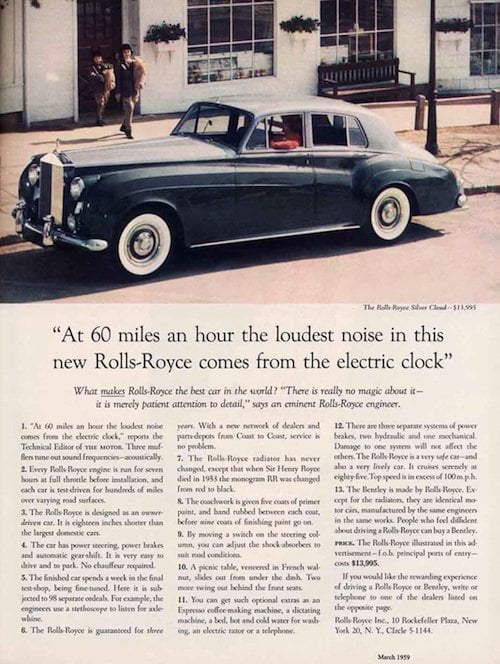
The headline “At 60 miles an hour the loudest noise in this new Rolls-Royce comes from the electric clock” took 104 times to get right.
How many times are you rewriting headlines until they’re perfect?
There’s a good chance you’re giving up too soon.
Check out my article on copywriting exercises to learn how to strengthen this skill.
2. Personalized Calls to Action Are 202% More Effective (HubSpot)
A call to action is a phrase that tells customers what to do.
It might be to buy a product, register, schedule a free demo, etc.
They range from a single word to an entire sentence.
CTAs are also mandatory.
Copy without a CTA is like pancakes without syrup. What’s the point?
However, they can’t be generic.
Sure, calls to action like “Buy now” or “Sign up today” work in many cases. But, nothing beats personalization.
After all, some customers feel like cogs in a wheel.
Can you blame them? Advertisers blast out huge campaigns that aren’t targeted in hopes they convert decently.
That’s why personalized calls to action perform 202% better.
Here’s what a custom call to action looks like:
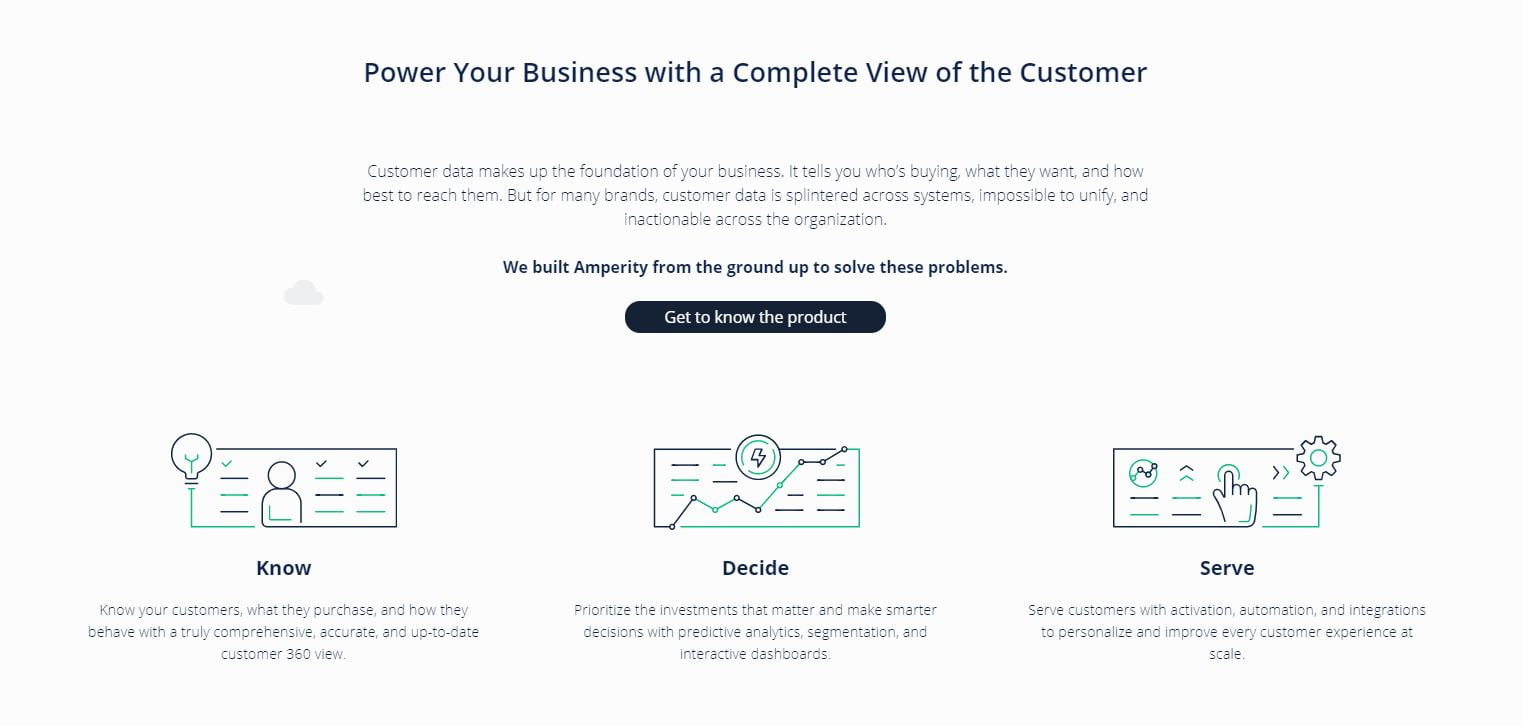
This is from an AI marketing home page.
“Get to know the product” is much better than “Learn more” or another generic phrase.
It implies that the reader will learn more about the product in-depth versus something like “Learn more” which is vague.
Here’s another good example from the content marketing tool BuzzSumo:
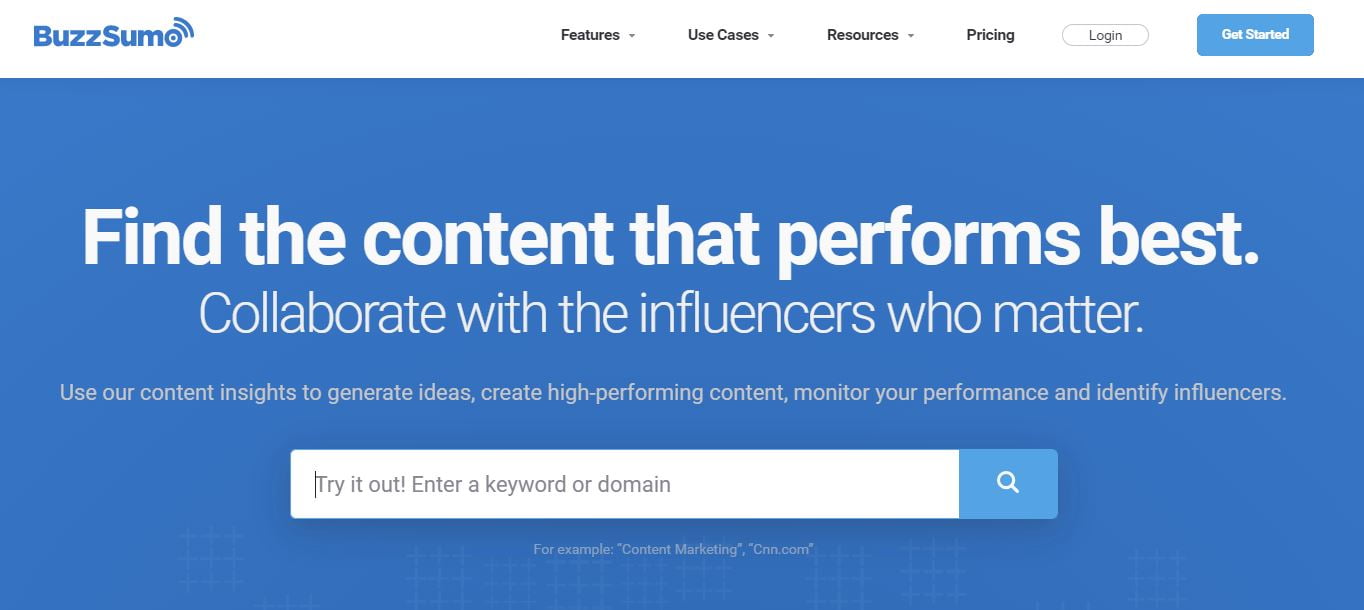
There are many customized calls to action on the homepage, including:
- “Find the content that performs best.”
- “Collaborate with the influencers who matter.”
- “User our content insights to generate ideas”
- “Try it out! Enter a keyword or domain”
These are the types of CTAs that will generate much higher clicks because they tell the user to do something very specific.
Next time you’re creating calls to action, tailor them to the specific page, product, or buyer persona to maximize engagement.
3. 74% of Web Readers Pay Attention to the Quality of Spelling and Grammar (RealBusiness)
Me fail English? That’s unpossible.
The spelling and grammar used on a page will have a direct impact on branding.
Imagine yourself.
If you were going to buy a product and the sales page was riddled with errors, how would you interpret that?
Not very well, right?
If they can’t put in the effort to clean up spelling, they probably don’t put in effort to anything else.
That’s one of a million thoughts a customer would have.
So, don’t be lazy. Take the time to edit after you’re done writing copy to polish it like a car.
Otherwise, you WILL lose customers and money. It’s almost a guarantee.
I suggest using a free grammar tool like Grammarix. Simply copy and paste the text into the editor.
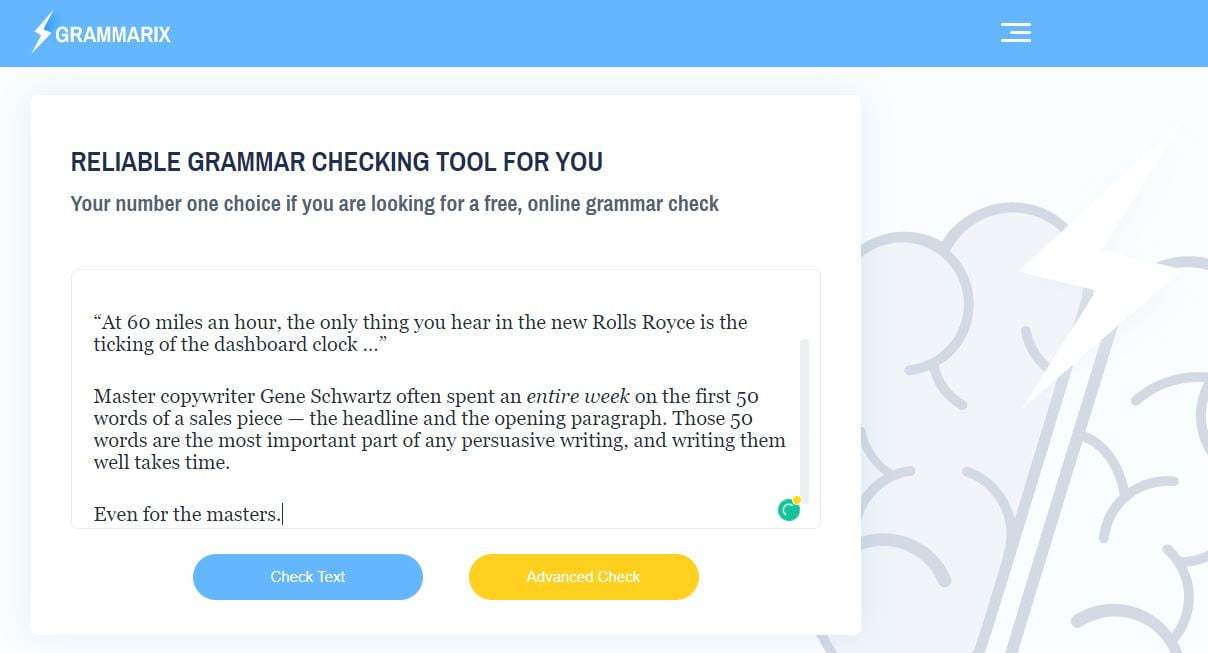
Click “Check text” and it will provide you with suggestions to fix any errors.
Don’t forget to read my copyediting checklist to make sure your sales copy is 100% perfect every time, too.
4. Readers Only Consume 20% of Content on a Page (Nielson Norman Group)
You write a beautiful Monalisa of a blog post.
It’s 3,000 words and packed with great information.
Well, I have some bad news for you…
Users will only read approximately 600 words of that 3,000.
This is because readers only consume roughly 20% of what’s on a page.
Be honest. We’re all guilty of it at some point.
We’re crunched for time and have become a culture of skimmers.
You use the scroll wheel so much it starts to give off smoke.
Many readers are looking for a very precise tactic or piece of information. Thus, they scroll through reading the headers to find what they need before leaving.
Rarely are people reading every single word, as much as we’d love that.
You can align with this behavior by clearly formatting copy into different sections and using a hierarchy. This makes it easy for the eyes to navigate.
Look how this sales letter from Agora Financial is neatly organized with headers and images to separate different points:
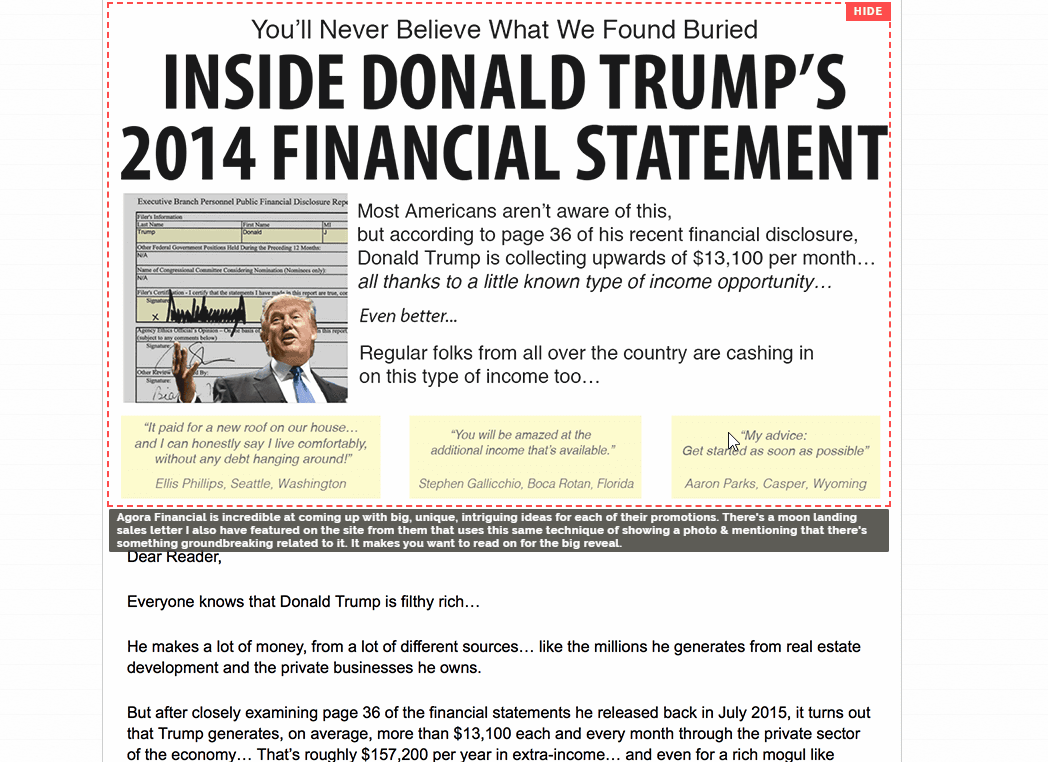
5. Social Proof Can Increase Newsletter Signups By 20% (Unbounce)
Do you use email marketing to generate leads or sales?
Of course, you do!
However, are you taking advantage of social proof to increase how many subscribers you generate?
Unbounce conducted a test for one of their clients in which they added “4,500 current subscribers.” to an email subscription landing page.
This increased signups by 20%!
But, why is it so effective?
Because the psychological trigger is known as social proof.
This was first coined by psychologist Robert Cialdini in 1984 in his book Influence.
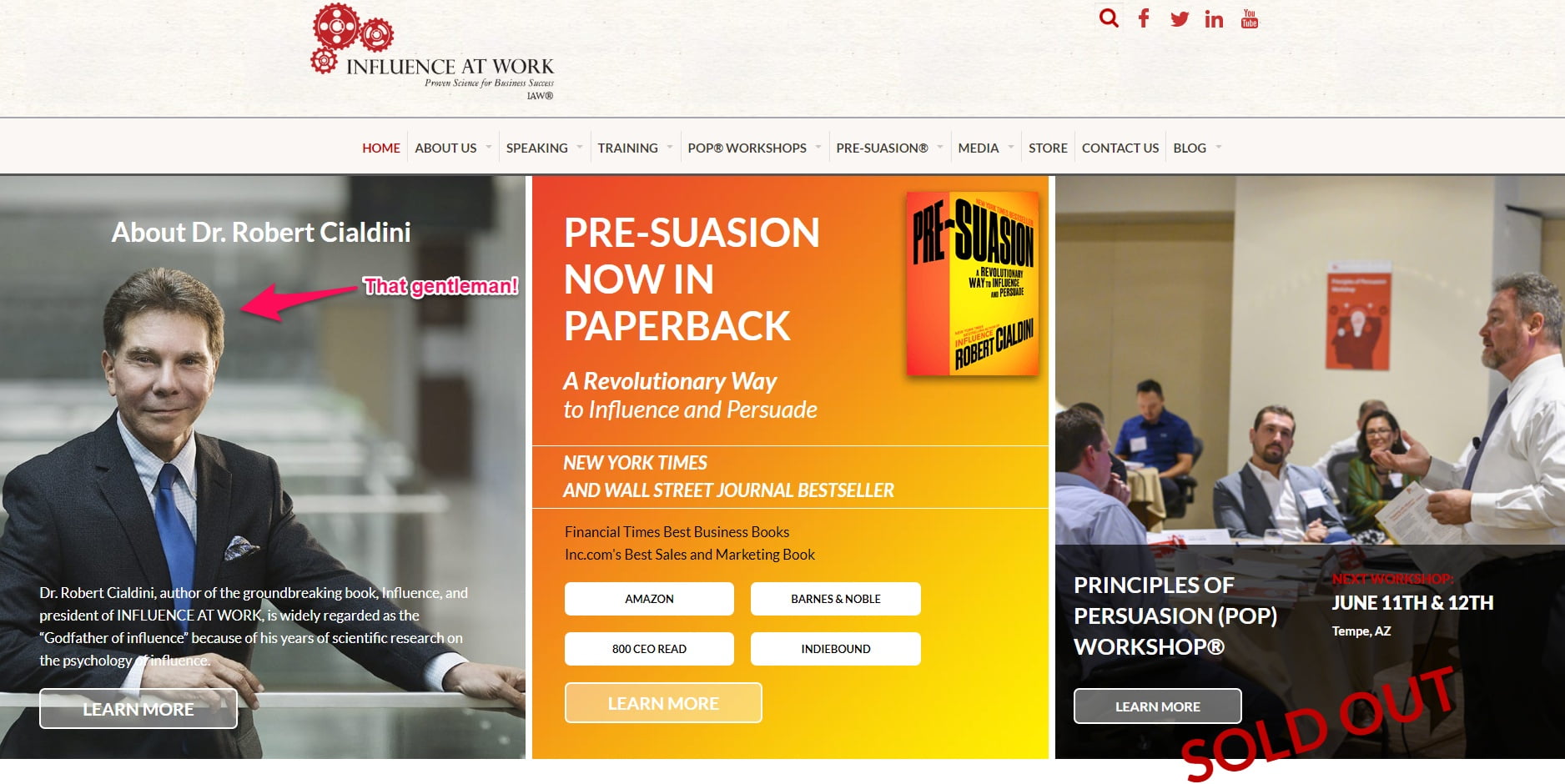
The theory says that we look at how others behave and take similar actions to save time and energy if it appears safe.
In the case of Unbounce,’s client, if 4,500 other people subscribed, why shouldn’t you?
You can use this tactic to your advantage by displaying subscribers, purchases, customers, reviews, and similar social proof on sales pages.
6. 60.8% of Marketers Agree Visual Content Is Absolutely Necessary (Impactbnd)
Perfect copy is not enough.
It will carry some weight on its own, but it also needs to be accompanied by great images.
Visuals help direct the reader through sales copy and provide further context.

Note how this looks exactly like the Rolls Royce ad I showed you earlier.
Howard Gossage, another legendary advertiser, created this ad as a cheeky response to Ogilvy’s Rolls Royce project.
It has the complete opposite value proposition, stating “At 60 miles an hour the loudest noise in this new Land-Rover comes from the roar of the engine”
Moreover, the bulky and military-like Land Rover image suits the copy perfectly. You can practically hear the grumbling engine!
7. 73% of Companies Hire Someone To Do Their Content Strategy (Content Marketing Institute)
You could write sales copy yourself, or you could get back to work that matters and outsource.
The reality is writing copy is difficult.
You need to go through many variations, plan, organize resources, and perform countless other steps.
If you run a company, outsourcing content and copy to a writer like myself is a wise investment.
Not only does it save you countless time and headaches, but talented writers can knock KPIs out of the park.
Hence why 73% of companies outsource their content marketing nowadays.
8. Messages That Are Written at a Third-Grade Reading Level Receive 36% More Responses (Boomerang)
If you write copy in a way that only MIT graduates can understand, you’re going to miss out on a big piece of the pie.
This is because the average reading level is nowhere near that level.
Think about it like this…
If you speak simply, everyone from the Google scientist to a layman can understand you.
However, excessive technical jargon and complex vocabulary exclude a large group of people.
Avoid that.
Speak in a simple manner that expands how many can understand your copy and ultimately convert into a paying customer.
Keep paragraphs and sentences short if possible, too.
If technical jargon is going to be used, clearly explain it afterward.
9. The Average Click-Through Rate of an Ad Is 1.91% (HubSpot)
What do ads consist of?
Sales copy!
Thus it’s important to optimize the copy to improve click-through rates. Which, by the way, is 1.91% on average.
And, if more people click an ad, that means more potential revenue.
But, how do you do that?
Firstly, apply what I taught you earlier about smart calls to action.
Tailor it to a buyer persona or individual product feature.
This Google ad focuses on its lead scoring feature, for instance:

Secondly, clearly state the benefit of the product being advertised like so:

“Improve your email marketing results” clearly communicates that this brand’s tools will help increase email performance.
10. Freelance Copywriters Earn Over $250 per Hour (Freelancing Hacks)
Freelancing copywriting is one of the most lucrative industries.
However, it’s easier said than done.
You first have to build up a portfolio, and specific skills, and acquire high paying writing clients.
Secondly, you have to choose and master the right copywriting niche.
Once you have climbed this mountain, you can earn up to $250/hour!
That’s roughly what I make right now.
Check out my free copywriting course to sharpen your skills and you’ll be able to earn that much in no time.
On the flip side, companies shouldn’t shy away from investing in a good writer.
While it could be expensive to do so, talented copywriters can generate a large ROI.
Updated Copywriting Statistics For 2024
Hey there. I’ve compiled some updated copywriting statistics for you to use as sources or to learn from. Enjoy!
Website Copywriting Statistics
11. Word Count and Conversion Rates: Landing pages with less than 100 words converted 50% better than those with 500 words. (Mirasee)
12. Using The Word “Because” Increases Conversions: Including the word “because” in your request can increase compliance from 60% to 94%. The average click-through rate for search ads is 1.91%. (Codeless)
13. Copy Needs to be Scannable: Only 20% to 28% of web content on a page is read by viewers, emphasizing the need for scannable copy through bullet points, subheadings, and images. (KhrisDigital)
14. Video on Landing Pages and Engagement: Including video on landing pages can increase conversions by up to 80%. (Luciano Viterale)
15. Multiple Landing Pages Increase Lead Generation: Businesses, both B2B and B2C, benefit from having more than 30 landing pages, aiding significantly in lead generation and strategy evaluation. (Techjury)
16. Simplification Enhances Conversion: Reducing the number of offerings on a landing page can decrease confusion and potentially boost conversions by up to 266%. Simplification and focus are key. (Techjury)
17. Form Fields Affect Conversions: Landing pages that minimize form fields, especially personal information requests, see higher conversion rates. Optimally, a reduction to around four fields can significantly increase conversions. (WebsiteBuilderExpert)
18. Headline Importance: An effective headline can greatly improve your Call-to-Action (CTA) success, with 90% of people checking the CTA if the title is engaging. (Cience)
19. Content Quality Matters: Listicles and articles with at least one list every 500 words see up to a 70% traffic increase over those without lists, and embedding “because” in CTAs can improve responsiveness by 34%. (MarketSplash)
20. Addressing Objections and Copy Bloat: Proactively addressing potential customer objections within your landing page copy can build trust and reduce hesitations. Additionally, eliminating unnecessary words or “copy bloat” can make your message more concise and impactful. (Massive Peak)
21. Storytelling for Trust and Credibility: Incorporating stories that outline a customer’s journey or transformation after using your product or service can significantly enhance engagement and conversions. (GetResponse)
Social Media Copywriting Statistics
22. Hashtags and Engagement: The use of hashtags increases engagement by 100%, and brands that tweet fewer URLs and more mentions are 17% more likely to grow their follower count. (Mirasee)
23. Accessibility in Social Copywriting: Writing with accessibility in mind is crucial for creating an inclusive social media experience. Best practices include using CamelCase for hashtags, avoiding all caps, and writing in plain language to make your social content accessible to everyone, including those using screen readers. (Sprout Social)
24. Content Length and Active Voice: On platforms like X (formerly Twitter), posts have a maximum of 280 characters for most users, but the ideal post length is around 240-259 characters. Using an active voice for clearer and more actionable social content is recommended. (HubSpot)
25. LinkedIn’s ROI: LinkedIn ranks as the fifth largest social media platform providing a high ROI for marketers, making it a significant channel for content distribution, especially for B2B brands. (HubSpot)
26. Instagram Strategy: Instagram advises using three to five hashtags for optimal engagement. The platform emphasizes the importance of short, compelling captions, with the most crucial information, such as calls-to-action, placed in the first three lines. (HubSpot)
Email Copywriting Statistics
27. Emails Require Mobile Optimization: Mobile optimization is crucial as 81% of emails were opened via mobile devices in 2020, with 80% of non-optimized emails deleted if opened on a mobile device. (Mirasee)
28. Optimal Subject Length by Characters: The average email subject line is around 43.85 characters, optimal for visibility across devices. (Codeless)
29. Email Marketing ROI: Companies that A/B test all their emails see a 37% increase in email marketing ROI compared to those that do not. (Passive Secrets)
30. Email Subject Lines: Using the word “free” in email subject lines can boost open rates by up to 29%. (Luciano Viterale)
31. Optimal Subject Length by Words: The ideal length for a headline is 6 words for optimal engagement. (KhrisDigital)
Video Script Copywriting Statistics
32. Video Length and Engagement: Short videos are more compelling for marketing purposes. About 68% of people prefer learning about new products or services through short videos. It’s recommended to keep scripts concise, ideally not exceeding two pages, to facilitate succinct and engaging videos. (HubSpot)
33. Storytelling and Characters: Good storytelling is crucial for creating compelling videos. Characters help audiences engage with the content, making it essential to develop relatable characters around your message. Tailoring these characters to your target audience enhances the narrative’s effectiveness. (TechSmith)
34. Outline and Structure: Starting with an outline gives your video script a solid structure, ensuring that your message is clear and the video appears organized. Breaking down the outline into sections helps maintain logical progression and clarity throughout the video. (TechSmith)
35. Call to Action: Placing a clear call to action (CTA) at the end of your video is vital. The CTA should align with your video’s goal, whether it’s encouraging viewers to download software, visit a website, subscribe to a newsletter, or contact you for more information. (Movavi)
36. Read Your Script Out Loud: Reading your script aloud is essential to ensure it flows naturally and doesn’t sound like reading. It also helps to check the timing and pace of your speech. Recording and listening back can provide insights for further refinements. (Movavi)
37. Feedback: Seeking feedback on your script from friends, colleagues, or potential viewers is invaluable. It helps identify areas of improvement and ensures the key message of the video is clear and effectively communicated. (Movavi)
38. Visuals and B-roll: Incorporating visuals and B-roll footage as specified in the script enhances the viewer’s understanding and retention of the dialogue. It’s important to support any B-roll with proper callouts in your narrative to maintain coherence between audio and visual elements. (HubSpot)
39. Engaging and Relatable Characters: Creating engaging and relatable characters for your video helps your audience connect more deeply with the content. (TechSmith)
SEO Copywriting Statistics
40. Voice Search Optimization: Pages using Schema markup feature prominently in voice search results, significantly higher than the global average. (Backlinko)
41. Video SEO: Video content significantly impacts SEO, with a strong correlation between video engagement metrics (such as comments, views, shares, and likes) and higher YouTube rankings. (Backlinko)
42. Link Building and Keyword Research: Social media use in link-building efforts results in a 22% increase in links built. Furthermore, a staggering 94.74% of keywords receive ten or fewer monthly searches. (Ahrefs)
43. SEO Industry and Technical SEO: A minority of websites pass the Core Web Vitals threshold, and many sites face challenges with Hreflang implementation and 3XX redirect issues. (Ahrefs)
44. SEO Copywriting Fundamentals: SEO copywriting focuses not just on appealing to search engines but also on offering real value to readers, with a careful balance between targeting keywords and crafting readable, engaging content. (Search Engine Journal)
Wrapping Up These Copywriting Statistics
Copywriting is extremely complex.
So, it’s crucial to understand what strategies are trending to maximize return.
And, what better way than to look at raw data?
The information I shared with you today points to many different things, including:
- Eight out of ten people only read headlines. Spend time creating headlines that readers can’t resist.
- Personalize calls to action to maximize their performance.
- Thoroughly edit grammar and spelling to avoid losing customers.
- Format content with headers and visuals to help people skim.
- Use social proof to increase conversions.
- Add visuals to support sales copy and retain engagement.
- Outsource content and copywriting to a professional.
- Use a simple vocabulary to reach the largest possible audience.
- Use CTAs and benefit-driven copy to increase clicks.
- Freelance copywriters earn up to $250/hour.
Check out my copywriting courses to get coaching from me and access to a private community of writers.














